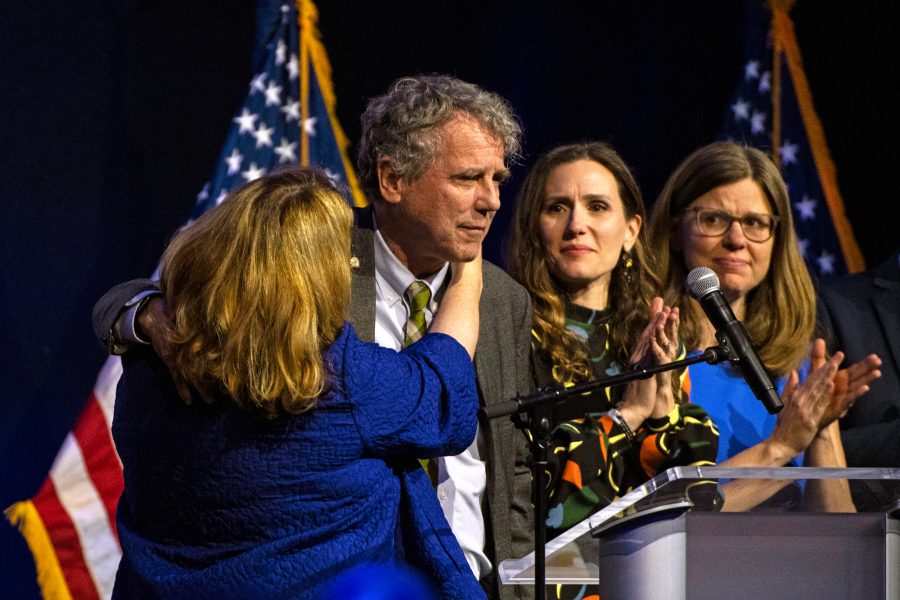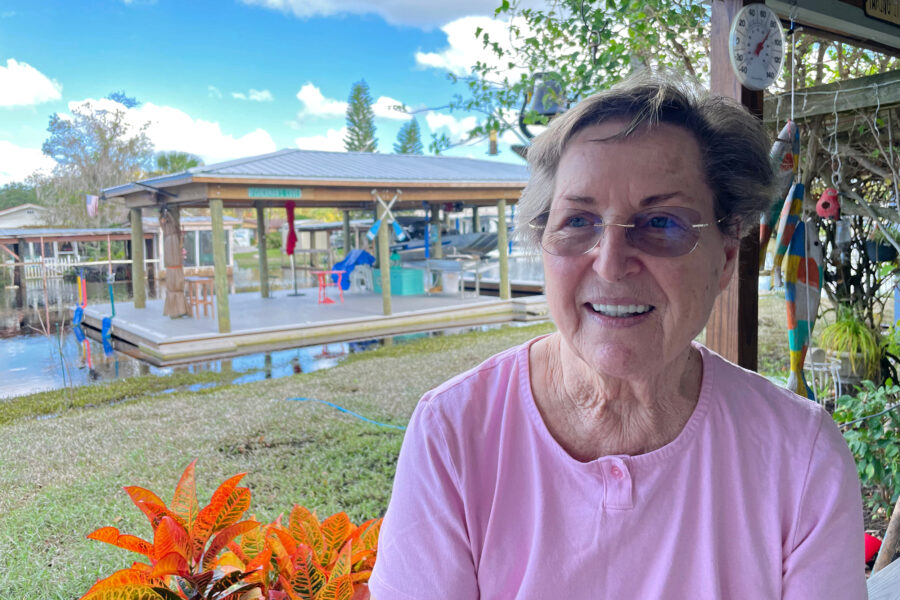Zambians Feel the Personal Consequences of Climate Change—and Dream of a Sustainable Future
CHONGWE, Zambia—Benson Chipungu sits in a leather armchair and reaches for the remote to switch off the news. Pieces of fabric hang over the windows, darkening the room against the heat. A gas-powered hand-plough is parked in the corner. On the floors behind his chair, dozens of ears of corn are spread out, a display of the paltry crop the 56-year-old farmer managed to salvage from his rain-starved soil.
“The fields are a sorry sight,” he says. “We’re saving what we can.”
Everyone here, in this country of nearly 20 million people, is nervously doing the same thing. It’s too late for the rain.
Corn, or maize as most people here call it, is the lifeblood of the country’s diet, eaten for breakfast, lunch and dinner in the form of “nshima,” a high calorie, polenta-like porridge made from ground corn known as mealie meal. Unless they’ve had nshima, most Zambians feel like they haven’t eaten.
We’re hiring!
Please take a look at the new openings in our newsroom.
See jobsThe corn processed into mealie meal depends on a rainy season that begins around planting time in November or December and ends in March or April, with the harvest. But this year very little rain has fallen and unusual heat has stressed the crop even more. Even if it rains now, farmers will harvest a fraction of their normal crop. The country expects a 50 to 60 percent reduction in yields.
At the end of February, facing a hunger crisis, Zambia’s president made the politically difficult move of declaring a national emergency—the first in 40 years. Worsening matters, the water levels on the Zambezi River are so low that turbines at the massive Kariba Dam, the country’s primary source of power, could sputter and stop. Ten days after the emergency declaration, the government imposed “load shedding” measures that requires every customer in the country to go without power for eight hours every day for the next two months. Normally these measures aren’t implemented until the end of the dry season in October.
In recent decades a boom in mining and agriculture led the World Bank to reclassify Zambia from a “least developed country” to a “middle income country.” Its capital, Lusaka, has sprouted new office towers, shopping malls, hospitals and a growing professional class—all the signs of an upward economy, of the kind the global North has experienced for a century, abetted by fossil fuels. But the COVID crisis knocked the country off course and it became the first African country to default on its sovereign debt.
Now Zambia is trying to get back on track, but could again be derailed by something it can’t control: Rain.
Rain grows its food and powers its energy grid; rain keeps the lights on and the fans blowing in supermarkets, barber shops and roadside restaurants. Rain cranks operations at Zambia’s lucrative copper and cobalt mines, essential not just for Zambia’s economy, but the global energy transition.
A country’s food insecurity is usually the result of complex, intertwined factors—bad weather, economic problems, war or conflict—that complicate the process of attributing food shortages or malnutrition to climate change. But in Zambia, right now, the link between hunger and climate change is unusually stark.
Warming waters off the African continent’s coast, heated by the burning of fossil fuels, are accelerating atmospheric changes here and supercharging the weather phenomenon known as El Niño. It’s hot and dry here—and will get hotter and drier in some areas, and wetter and more flood-prone in others. For a country that depends almost entirely on rain, the lack or over-abundance of it means big trouble. This atmospheric see-saw will test the country’s infrastructure, notably the beleaguered Kariba Dam and the reservoir it holds back, the largest in the world.
None of this is the fault of the people who live here, but they’re the ones left to cope with the vagaries of their once-reliable rainfall. Historical per-capita greenhouse gas emissions here, as in most African countries, are relatively tiny. The Zambian government, like those in many other developing countries, is calling for help.
“We are suffering because the climate has changed,” said Collins Nzovu, the head of Zambia’s ministry for green economy and environment. “We have never suffered a drought like this.”
Nzovu, who led the African Group of Negotiators at the recent United Nations climate negotiations in Dubai, believes it’s past time for rich, higher-emitting countries to compensate his. They should, he said, go beyond funding efforts to cut greenhouse gas emissions or adapt to climate change. They should pay for what’s known in global climate-negotiation-speak as “loss and damage”—the impacts of climate change that can’t be adapted to or mitigated.
“The Americans must get out their checkbooks and pay,” Nzovu said.
Across the country, people plant corn everywhere—in small patches at the side of the road, in family gardens and in acres of farm fields. Most of it is stunted, its blonde, crispate leaves crinkling in the hot breeze.
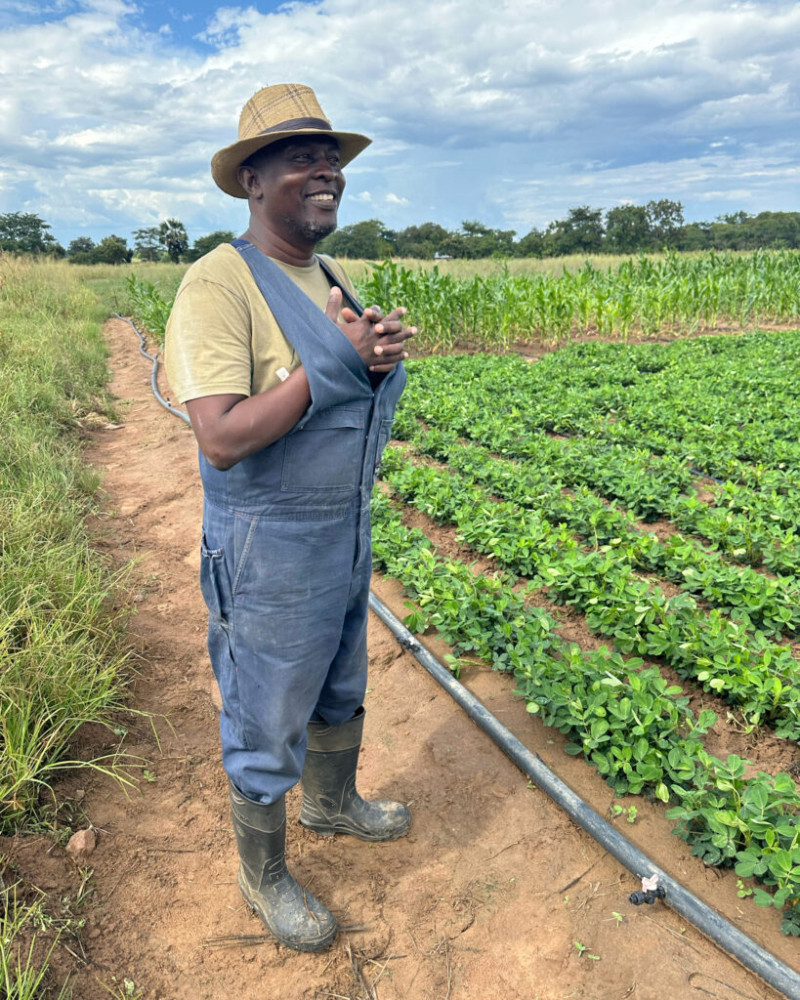
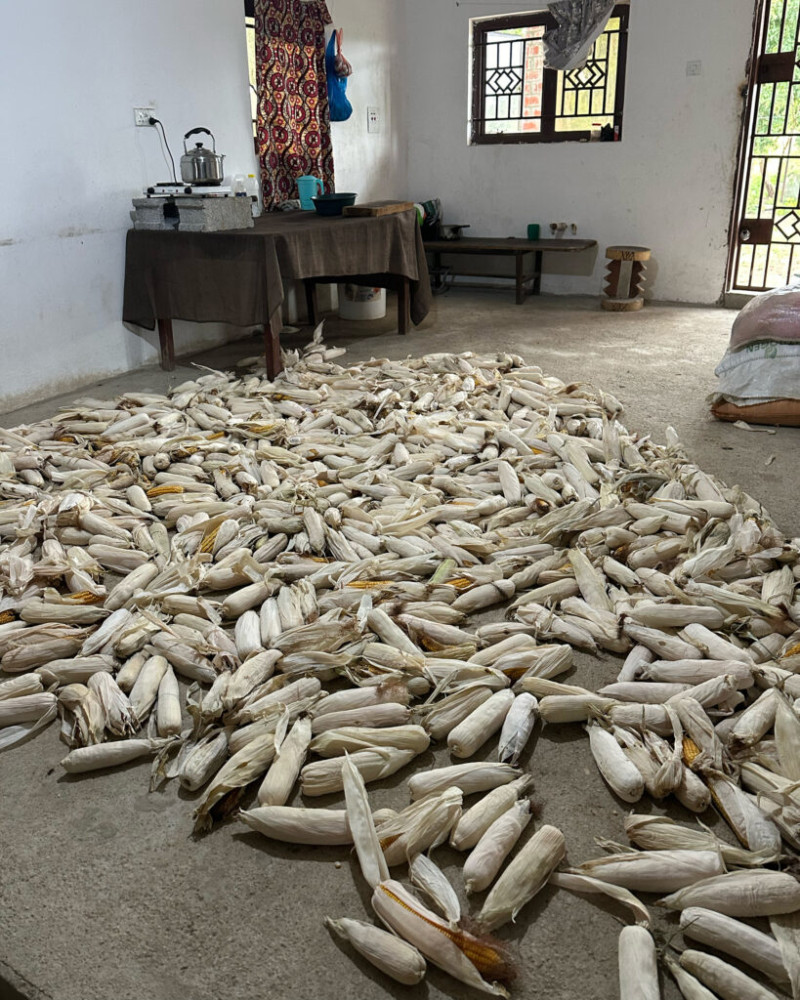
Chipungu walked out to his fields, where he grows corn and peanuts, called groundnuts here.
He grew up on this land. He can point to his village, a cluster of low-slung houses in the near distance, and to his parents’ graves. He hopes one of his five children will show interest in taking over the farm, but they’re in the city, pursuing marketing and engineering jobs. He doesn’t blame them. Farming here has always been tough, and climate change has made it harder.
“We need investment in wind and solar, in irrigation, even for a small farm like this,” Chipungu says. “We need to change or we won’t survive.”
Nshima Nation
Nearly everyone in this country comes from a village where their parents lived and their parents before that. The village is a touchstone, a connection to the past. It’s also a security blanket of sorts.
Jairos Nyamowa, amiable and quick to smile, drives taxis in Lusaka, but like most people here, he also farms. Back in his village, he has a small plot where he grows corn and a garden where his family grows vegetables. If life in the city goes sideways, he knows he can at least count on that.
“You go to the city to try, and if you fail, you go back to the village,” he says. “And then you go back to the city and try again.”
Small-scale farmers like Nyamowa provide 95 percent of Zambia’s staple crop. Much of it is consumed here; some is exported.
But the security that these small farms provide—the farming equivalent of a savings account—feels unsettled these days. There’s nothing secure about it anymore. This year has made that obvious.
In Lusitu, a village in the country’s hot south—its historical breadbasket—farmers are learning to adapt. They’re planting trees for shade and drought-tolerant crops, like millet, sorghum and cassava.
Dickson Matulula spends a lot of time on farms, but dresses like he’s going to an office, his black shoes covered in dust. Matulula is the climate change coordinator for the aid group Catholic Relief Services, and works with farmers in this village and others throughout Zambia, to help them try out these new “climate smart” strategies. These adaptation methods are not just the key to helping farmers feed themselves, they’re critical for the country’s development and future.
“Fields like these feed the nation,” he says, standing by a small stand of withered corn.

The Zambezi River, Lusitu’s main source of water, is about seven miles away. Pipes that once carried water from the river to the village fields fell into disuse in 2011 after years of neglect. Now villagers have to walk for water.
Corn is a water-hungry crop, but in a country where nshima is the major source of calories, farmers will continue to plant it for the foreseeable future. When asked what they will eat if the corn fails, many Zambians struggle to come up with an answer. A diet without nshima is unthinkable.
The people who live in Lusitu are the family and offspring of those who were displaced when the nearby Kariba Dam was built in the late 1950s to harness the power of the Zambezi. The construction of the dam flooded their ancestral lands. They’re not inclined to move again.
“It will continue to be dry here. It will continue to be dry everywhere. We can’t move. We have to find the best solution here.”
Thomas Mugusagua has lived in the village his entire life. The 32-year-old sits in a thatched rondavel next to the parish church, wearing a t-shirt from the “Youth Climate Champions,” a climate action project funded by Catholic Relief Services, an aid group.
“If we can’t have maize, we have to look for alternatives,” he said. “We have to adapt to the new normal.”
When asked if he would consider moving, to the city or to more fertile ground, he shakes his head. “This would not be possible,” he says. “It will continue to be dry here. It will continue to be dry everywhere. We can’t move. We have to find the best solution here.”
Instead, he and his family will have to do what most of us have not yet had to: Change.
A Progressive, Climate-Forward Agenda
In a new building near downtown Lusaka, Nzovu, the Minister of Green Economy and Environment, and fellow ministers recently met with reporters around a massive conference table.
The ministry is just two years old and is the first created by any African government to specifically address the climate crisis. With its entire economy and progress tied to the climate emergency, Zambia is taking it especially seriously.
There are no politics on the frontlines of the climate crisis here; no debates about natural cycles or any of the other excuses that skeptics continue to push. There’s no time for that.
“We need to be in a hurry,” said Nzovu. “It’s a matter of life and death.”
Every young student in this country understands that climate change is “real” and is involved in doing something about it.
At the Katoba Secondary School, about 75 miles southwest of Lusaka, dozens of students sit in an assembly hall, as warm breezes flow into the room from open windows. It’s hotter than it should be outside.
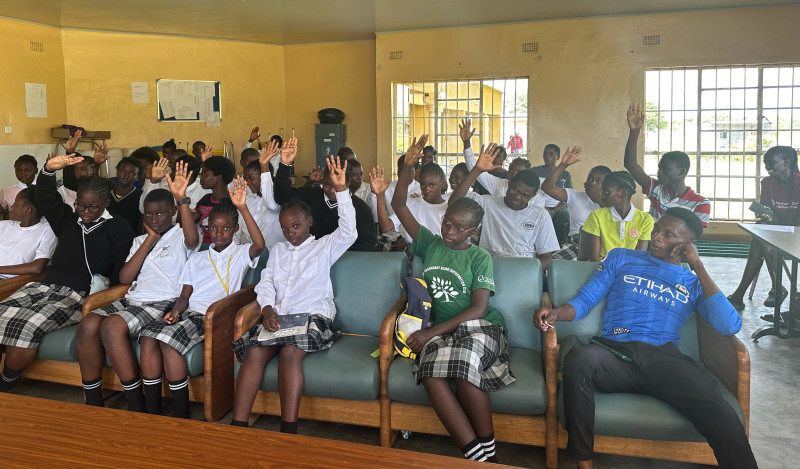
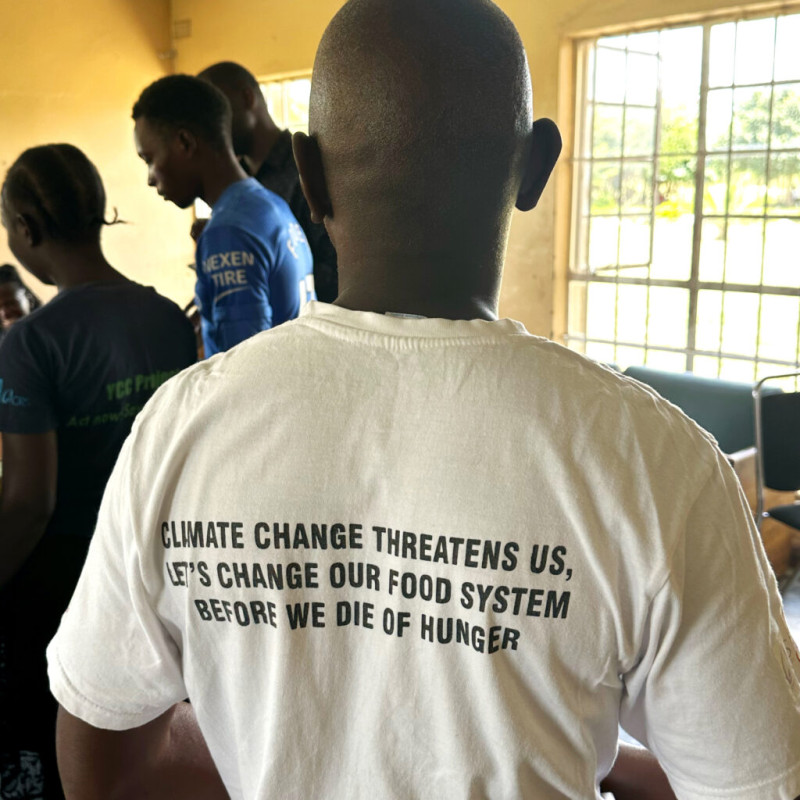
When asked if they understand what climate change is, their hands shoot up. And while the finer points of atmospheric warming may not be on the tips of their tongues, each student says that the climate is getting hotter and that the way to cool things down is by planting trees.
Tree-planting efforts, organized by conservation advocacy groups and the government, have become a nationwide preoccupation here—a way for ordinary Zambians, especially young people, to feel like they’re doing their part to help.
Deforestation rates have accelerated in recent years, largely because people are illegally felling trees to make charcoal. While neighboring Malawi and Zimbabwe have banned charcoal burning, it’s everywhere here. Silvery lumps are packed in netted bags, for sale along every roadside. They heat grills of skewered goat meat in city markets and light metal braziers outside many homes where people sit around talking into the night.
Burning charcoal and wood are part of the culture here and despite some efforts to get people to switch to other forms of fuel, Zambians continue to burn them. Only part of that persistence is cultural. Charcoal is a way to make a quick, if illegal, buck, especially if crops are failing and there’s nothing else to sell.
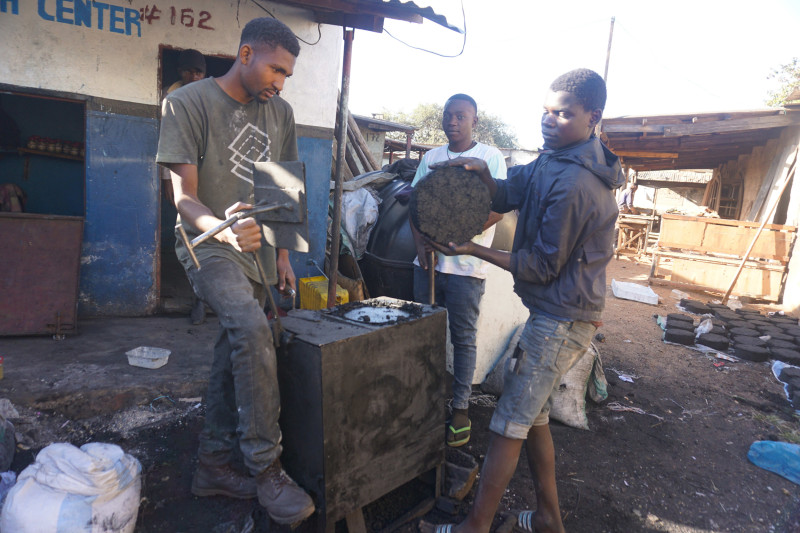
But the lack of trees means less shade and more carbon dioxide, packing a double hit of heat and greenhouse gas pollution. Planting them helps sequester carbon and has the added benefits of cooling, reducing erosion and enriching soils.
Seemingly every kid here knows that.
Namangolwa Mubita, her thin frame clothed in a button down shirt and skirt, is a teacher at Katoba who oversees the school’s conservation club, which teaches students—whom the faculty call “learners”—the value of planting trees and growing plants that can better tolerate the rising heat. These young people, Mubita says, are a new climate-conscious generation that’s becoming a force for change here.
“Even some of the learners’ parents are charcoal burners,” she says. “So they go back to the village and teach their parents the dangers of charcoal.”
Many farmers, too, have joined the tree-planting and greening efforts. Like everyone here, they’re being forced to give up long-held traditions and practices.
Elijah Mbewe, a young farmer and member of Youth Climate Champions, stepped into a fenced garden on his property. “This is the greenhouse,” he said, smiling. In the small plot, Mbewe has planted seedlings of several trees including moringa, a drought-tolerant species with highly nutritious leaves and pods.
Then Mbewe walked over to his corn field, looking less optimistic. “This is popcorn,” he joked, a little mordantly. “Because of the drought, I will not be able to manage a harvest. Next year, I’ll plant cassava, sorghum and millet because they are strong.”
He will also plant trees, which nature used to provide without his effort.
Then the young farmer, who provides for his entire extended family, says with conviction and authority. “We have a lot of greenhouse gases going into the atmosphere. If we plant trees, they will remove carbon dioxide; they will help absorb greenhouse gases.”
Mbewe says he has a dream for the future. “We will start to irrigate. We will have a pump with solar panels,” he says. “Right now we don’t have enough money. But that’s my plan.”
Repairing the Damage
Money is not just Mbewe’s problem.
The tab for the drought-driven shortfall of grain will not only cost this country untallied millions, it will put the brakes on any economic momentum.
“The food surplus is how we grow our economy,” Nzovu said.
Bordered by eight countries, Zambia wants to solidify its position as the corn hub of the region, but that bid could falter because of this year’s shrunken harvest. The lack of corn will also have ripple effects in those countries and beyond.
“We’ll have trouble finding food,” said Rosie Mercer, who runs a promotion group in the country’s tourism hub, Livingstone, home to the world’s largest waterfall, Victoria Falls. “And because it’s the same with our neighbors, they won’t have food either.”
Paying for the grain they’ll have to import from other countries when the harvest comes up short is not just a challenge for Zambia, but for other countries in Southern Africa that are also facing drought and worsening hunger in the coming months. Zambia, like many other African countries, has the additional barrier of a national policy banning genetically modified corn, which could prevent it from receiving corn or products containing corn in aid shipments. The United States, the world’s biggest producer of corn, also provides the most food aid globally.
Zambia has taken out an insurance policy through a program established by the African Union for weather-related disasters, as have some of its neighbors. But as more climate-stoked extreme weather events—from drought to floods—strike the region, that program will likely get stretched beyond its ability to provide for millions or tens of millions of people facing hunger, especially with corn from the U.S. off the table.
Insurance is just a bandage. Zambia needs longer-term fixes—and money to pay for them.
The Kariba Dam, built during the late colonial era before independence, when Zambia and Zimbabwe were British colonies known as Northern and Southern Rhodesia, is the largest of its kind in the world, providing power for both countries. For a decade now, repair work has been underway to shore up the massive structure as the bedrock underneath it erodes.
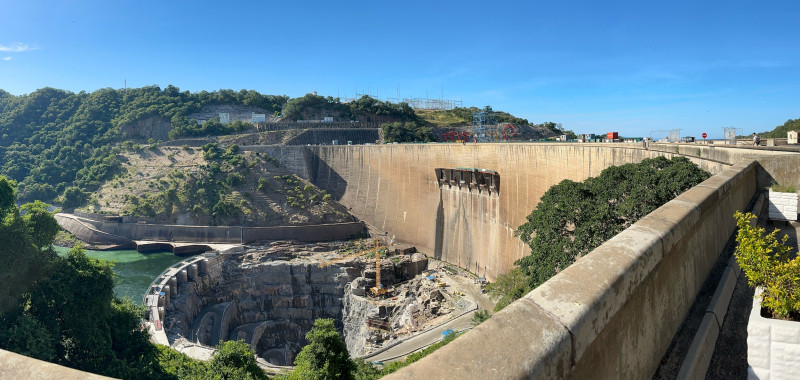
A NASA study found that Kariba Lake, created when the dam was constructed, will continue to decline because of El Niño, imperiling not only the dam’s operations but the people who depend on its water for farming. The Intergovernmental Panel on Climate Change projects that all of southern Africa will become hotter and drier over the course of this century.
On top of the dam, a temporary town of sorts has evolved as the years of construction wear on. Medical and administrative offices, housed in containers, sit on the dam’s subtly curved crest, next to a line-up of garbage and recycling bins. A young calico kitten—a survivor of a departed Chinese work crew who kept cats to eat—roots around for food. Fake potted plants, dwarfed attempts to beautify the monstrous structure, sit at the edge of the precipitous drop to the water below.
Charles Chibvura, the dam’s engineer, stands in an air conditioned office nearby, rattling off statistics about the dam’s recent safety record. He is careful to avoid talking about how climate change has driven down water levels, causing turbine failures and power outages, though the dam has not run at full capacity since 2011.
But even he concedes that drought and higher temperatures have spread over the dam’s entire catchment area. “It’s not looking good,” Chibvura said.
The country needs more dams and infrastructure, the government says, to power its economy and keep crops growing, but with the country already in default, the money to build those things has gotten harder to come by.
Government leaders argue, though, that other countries should pay the bill.
“We need to build dams; We need to irrigate,” Nzovu said, noting that the country wouldn’t need new dams “if the weather patterns hadn’t changed” because of climate change.
He argues that infrastructure as well as agricultural losses should be covered by a “loss and damage” fund. But details and management of the fund, agreed to by rich countries through the UN climate negotiations, are still slowly being worked out, so humanitarian aid may come first.
“It’s a clear case of loss and damage,” he said.
The Dreamers
Sebastian Scott stands next to one of the pig pens on his farm in the countryside outside of Lusaka, extolling the virtues of excrement.
Lanky and tall, wearing shorts and flip flops, Scott looks more like a surfer than a farmer, and when he talks, he sounds like a botanist as he rattles off the Latin names of drought-resistant trees and crops.
To Scott and his cohort of outliers, the way Zambia farms is all wrong. (Scott is the son of the former Zambian agriculture minister, who was temporarily the country’s president.)
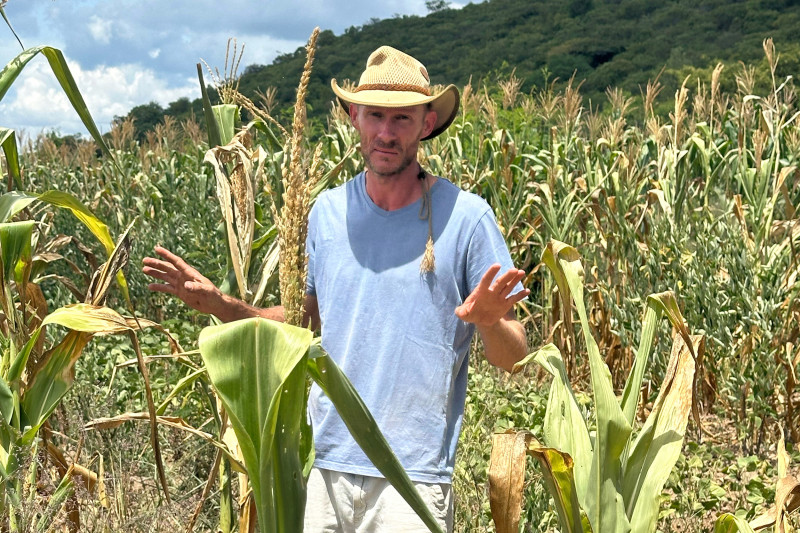
For starters, the manure that collects in fields loses its nutrients as it bakes under the sun. If animals were brought in at night and sheltered under a roof, all the manure could be collected and composted into fertilizer.
“If you take all the manure from all the cows, pigs and chickens in this country, we have enough,” he says.
That could save $500 million a year—the amount the government currently spends on synthetic fertilizer for corn—or about 5 percent of Zambia’s GDP.
Corn is not native to Zambia, nor is the country’s diet of nshima. Some farmers, including Scott, argue the country should diversify what it grows, including drought-resistant crops like millet and sorghum. The government is the biggest buyer of corn—farmers’ most stable market—but it also gives subsidies for fertilizer and seed, locking farmers into a system that won’t work anymore, especially as water availability shrinks, critics argue.
Scott has been experimenting with growing trees on his property and has found that crops, including corn, do better when grown next to nitrogen-fixing species, even with the drought.
On a hot afternoon, Tony Rinaudo—known in progressive farming circles as “The Forest Maker”—visited Scott’s farm, along with Rolf Shenton, another Zambian farmer who advocates for more holistic, diversified approaches to farming.
“Trees are an essential component of making agriculture work,” Rinaudo said.
Rinaudo pioneered a form of forestry management called Farmer Managed Natural Regeneration that helped turn the deserts of Niger into forests after decades of deforestation and abuse. The approach helps farmers regrow trees, even in deforested and degraded environments, by specially managing moribund shoots.
In mid-March, Rinaudo, Shenton and Scott all attended a conference on “nature-based climate solutions” in Livingstone, organized by an Australian organization called The Global EverGreening Alliance. It was the biggest conference ever held of its kind, attended by 150 conservation, farming and government groups.
The message, in one form or another, was that nature, helped along by the right resilience-building practices—like planting trees for shade—could provide small-scale farmers across Africa with the ability to bounce-back from weather disasters and grow enough to feed themselves.
In the coming weeks, the government of Zambia will release a report on the drought that evaluates the full scope of the cost and damage, and in the next few months aid agencies will issue their evaluation of the level of food insecurity in the country. Even before the drought, more than 1.5 million people required humanitarian assistance. The numbers will only be higher when the next report comes out.
The next rainy season, if it comes, is a long, dry summer away.
Baltimore-based Catholic Relief Services provided support for this reporting.
Share this article
Disclaimer: The copyright of this article belongs to the original author. Reposting this article is solely for the purpose of information dissemination and does not constitute any investment advice. If there is any infringement, please contact us immediately. We will make corrections or deletions as necessary. Thank you.


